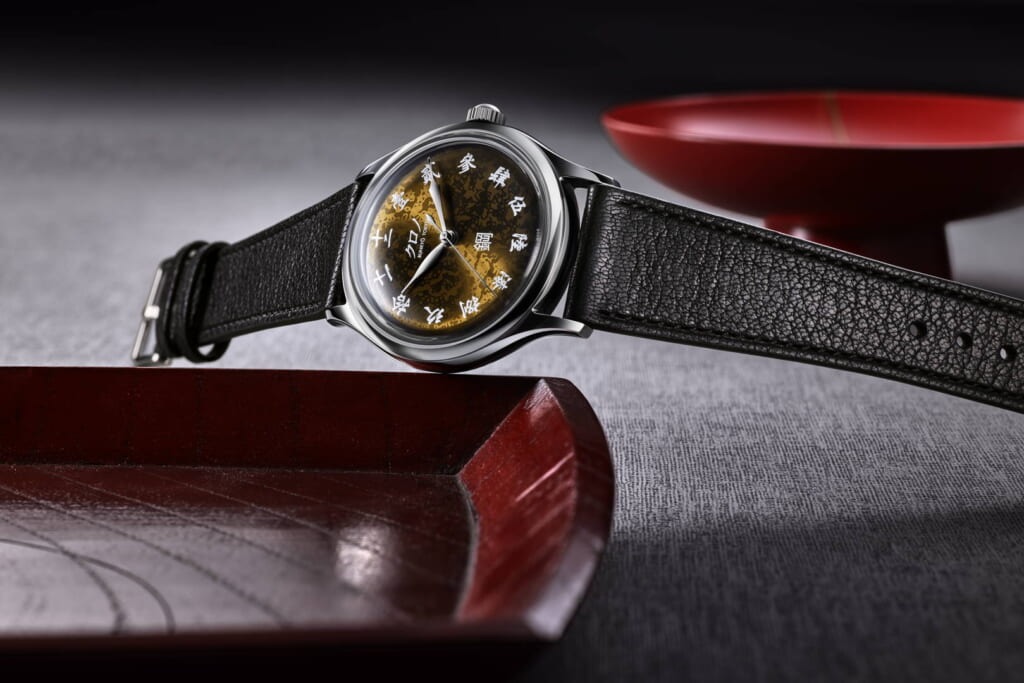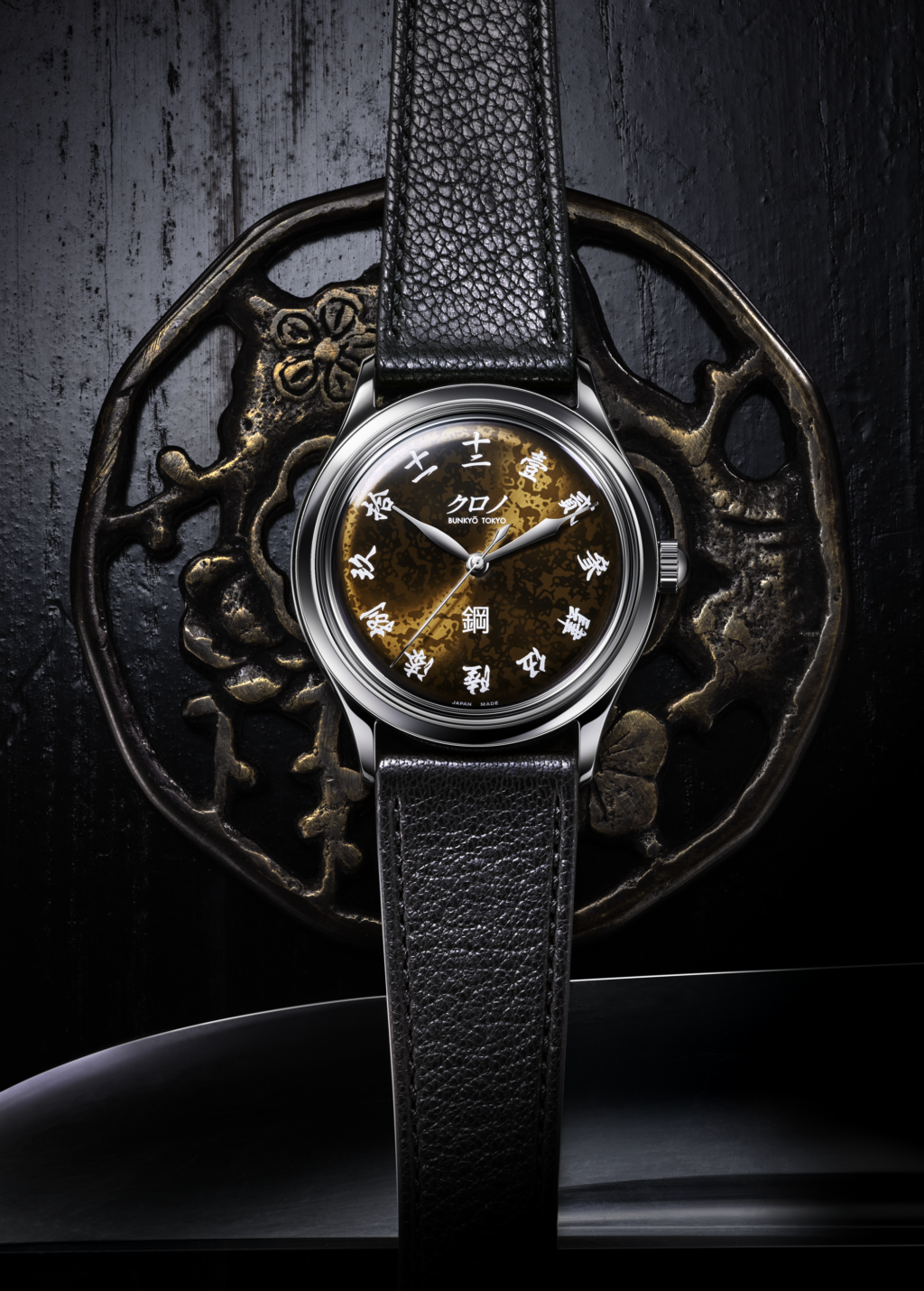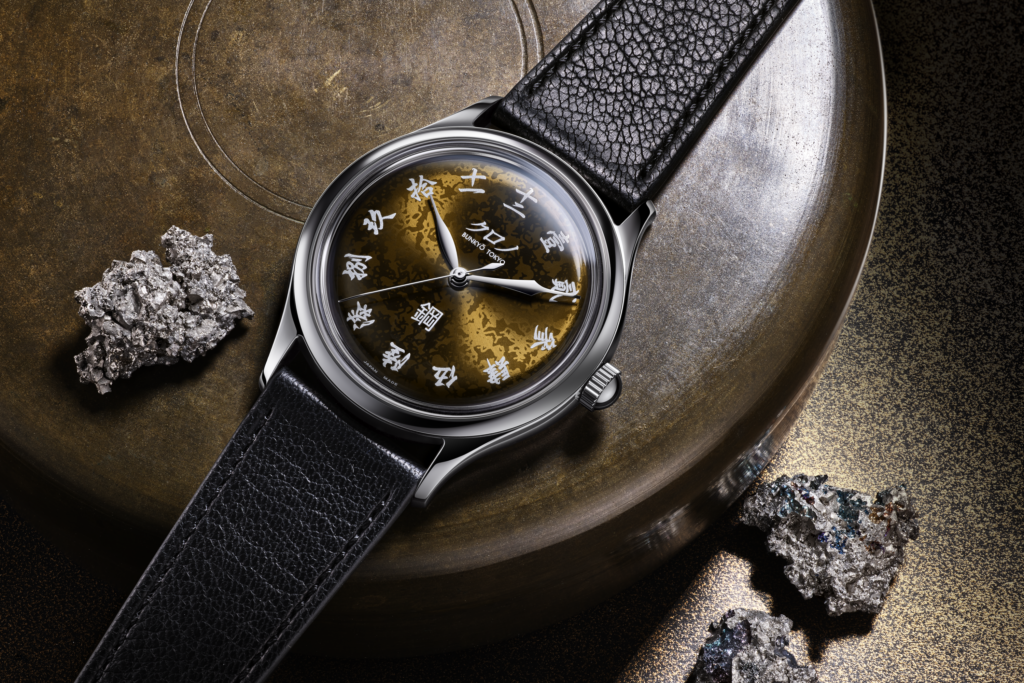This Kurono Tokyo Watch Was Inspired by a Traditional Japanese Swordmaking Technique
Using only charcoal and their fingertips, craftswomen applied a lacquer “so delicate that even the slightest wisp on the fingertip requires a start from scratch.”

Japan’s Kurono Tokyo just dropped a new flagship timepiece that stands far apart from western watches with a bold aesthetic and fascinating craftsmanship steeped in history.
The Grand Hagane features a layered deep-amber dial formed via a Urushi lacquering method, which employs filtered sap from the Chinese lacquer tree that absorbs moisture while hardening.
The resulting pattern features the same sort of distinctive spots created by the Tamahagane steel-forming technique, used to forge swords that signify “unbreakable, unbending and very sharp” properties.

According to the company, the Urushi lacquering was completed by craftswomen “in Kyoto who inherited the Kyoto-style Japanese lacquer technique. Kyoto lacquerware is based on a technique introduced from the Tang Dynasty in the Nara Period (710-794).”
The polished finish is achieved using only impurity-free charcoal and human finger tips. “The work is so delicate that even the slightest wisp on the fingertip can cause striations on the dial, which would have to be rebuilt from scratch,” Kurono Tokyo explains.
Meanwhile, a second lacquering called Roiro employs a chemical reaction between iron oxide and raw sap to create secondary blacks. The indices on the dial are rendered in ancient Koji, a written language still used for important documents to prevent plagiarism.

Technical specs include:
- Japan-made MIYOTA Premium Automatic movement 90S5
- Sapphire glass
- Embellished caseback
- 28,800 vibrations/hour, power reserve 40 hours
- Waterproof to 3 ATM (30 meters)
- 316L high-polished 37mm stainless steel case
- Thickness: 7mm
- Black calf leather band
- 20mm at lugs, 16mm at buckle
Priced at $3,171, the Kurono Tokyo Grand Hagane goes on sale December 9.
